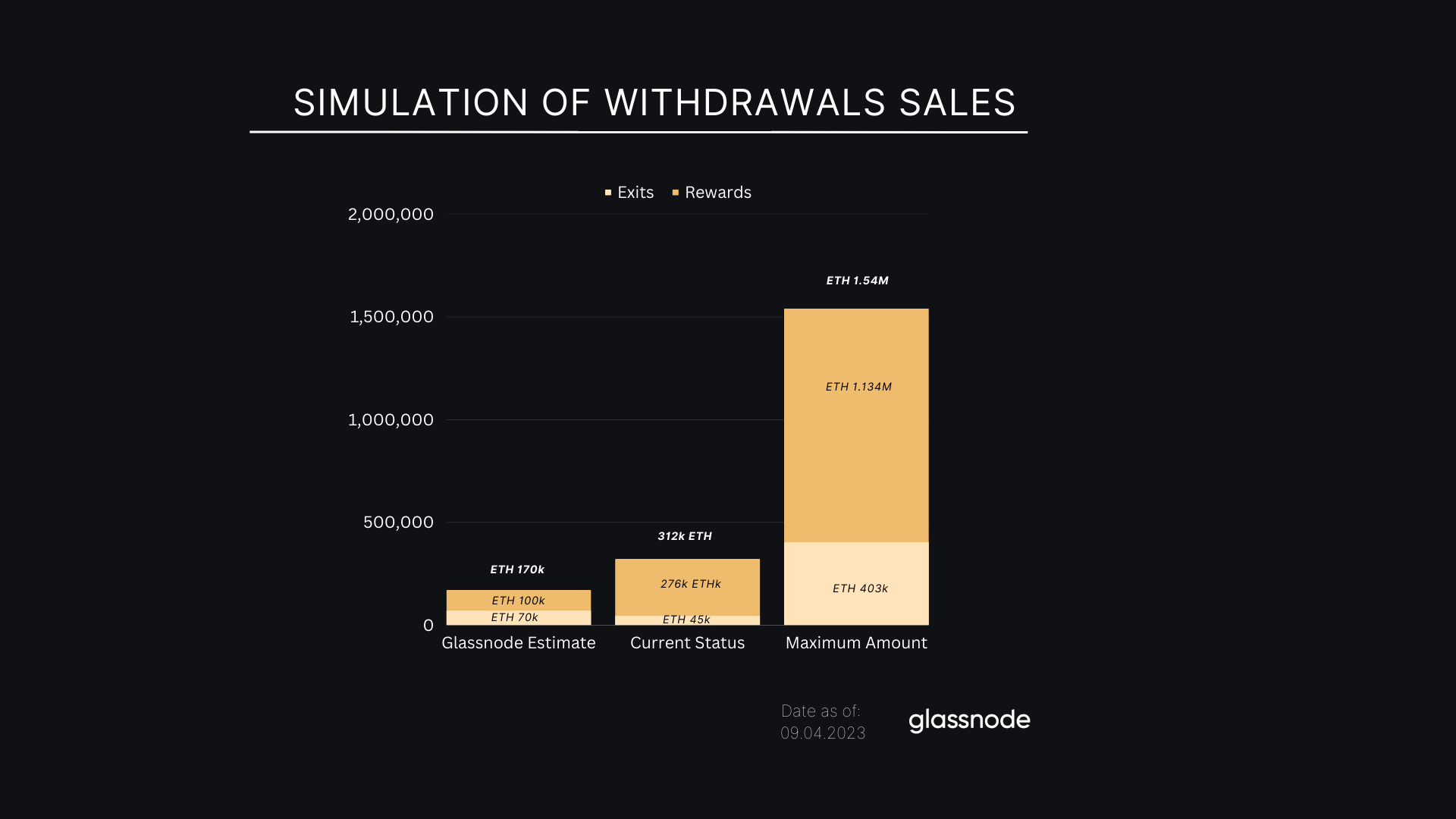The Ethereum Shanghai upgrade is set to go online later today. Here’s what impact it may have on the market, according to Glassnode.
How Will Ethereum Shanghai Upgrade Impact The Market?
Last September, Eethereum successfully transitioned to a proof-of-stake (PoS) consensus mechanism, meaning that stakers replaced miners as validators on the network. To become a staker, a user has to lock 32 ETH into a deposit contract.
While the mainnet only transitioned last year, this staking contract has been in place since November 2020, earlier functioning as part of the PoS test network. Anyone that has been locking coins into this contract, however, has been unable to withdraw them so far, as only deposits have been allowed.
This will finally change with the “Shanghai upgrade,” which is an ETH hard fork that will give investors the ability to withdraw their coins from the Ethereum staking contract.
Now, there are naturally concerns around the market as to how the sudden unlock of these coins may impact the ETH economy. In its latest weekly report, the on-chain analytics firm Glassnode has broken down the possible scenarios that may follow after the ETH Shanghai upgrade goes live later today.
Shanghai will allow two types of withdrawals to investors: partial and full. The former type refers to automatic withdrawals of the staking rewards the validators have accumulated, while the latter one involves a complete exit of the amount locked in by the staker.
While the users haven’t been able to withdraw their coins so far, they have still been able to sign a voluntary exit message in advance. After the hard fork goes live, the network will scan all the validators to see who has signed these exit messages.
A full withdrawal will take place for those that have signed them, while partial ones will occur for those that haven’t. The scanning process referred to here, however, isn’t an instant process. At the current number of validators, the network will take up to 4.5 days to complete the process. Presently, there are many validators that haven’t updated their withdrawal credentials yet.
“Currently, around 300k validators need to update their withdrawal credentials, which is only possible after the Shanghai/Capella update,” notes Glassnode. Based on this, the analytics firm thinks that the automatic scanning process will take a maximum of two days.
Right now, the locked contracts are holding staking rewards of about 1.137 million ETH ($2.1 billion). Ideally, these rewards would be automatically withdrawn as soon as the upgrade would go live, but as already mentioned, not all the investors have updated their withdrawal credentials.
As it turns out, the Ethereum validators who have the correct credentials own just 25% of the accumulated rewards, meaning that only about 276,000 ETH should be automatically withdrawn in the two days following the hard fork.
If all the validators update their credentials as soon as the upgrade goes live, then 1.137 million will be withdrawn over the course of 4.5 days. Below are the different scenarios this may play out in:
ETH staking rewards unlock scenarios | Source: Glassnode
Glassnode believes that the middle scenario from the above image might be the closest to what will actually follow when the Ethereum Shanghai upgrade will go live.
As for the scenarios regarding the full withdrawals, the firm notes that only 1,800 validators can participate in these exits per day. This means that right after the hard fork, only a maximum of 57,600 ETH ($109.4 million) will be unstaked.
Based on the number of validators that have signed the voluntary exit message so far, though, the actual amount that would be unstaked reduces to about 45,000 ETH ($84 million).
Now, here are the simulations made by Glassnode, taking into account both partial and full withdrawals, as to how the selling pressure may look in the first week after the Shanghai upgrade:

The various estimates regarding the staking withdrawals | Source: Glassnode
After taking into account various market factors (like the fact that not all withdrawals will actually end up being sold), Glassnode’s best estimate is that about 170,000 ETH ($323M) will be sold in this event. This amount is actually not that significant at all.
Even the most extreme case with 1.54 million ETH being sold is only on the level of the average weekly exchange inflows, meaning that the inflows would double if this scenario follows. Just a while ago, similar inflows were observed and the price responded with an around 8.7% correction.
While this may be a notable decline, it’s still nowhere near the level similar to the FTX crash observed back in November of last year, where the price went down by around 30.2%.
“Given the Shanghai upgrade is widely expected and understood, based on this analysis, the unlock event is on a similar scale to day-to-day trade for ETH markets, and is therefore unlikely to be as dire as many speculate it to be,” Glassnode concludes.
ETH Price
At the time of writing, Ethereum is trading around $1,800, up 5% in the last week.
ETH moves sideways | Source: ETHUSD on TradingView
Featured image from DrawKit Illustrations on Unsplash.com, charts from TradingView.com, Glassnode.com
Credit: Source link
































